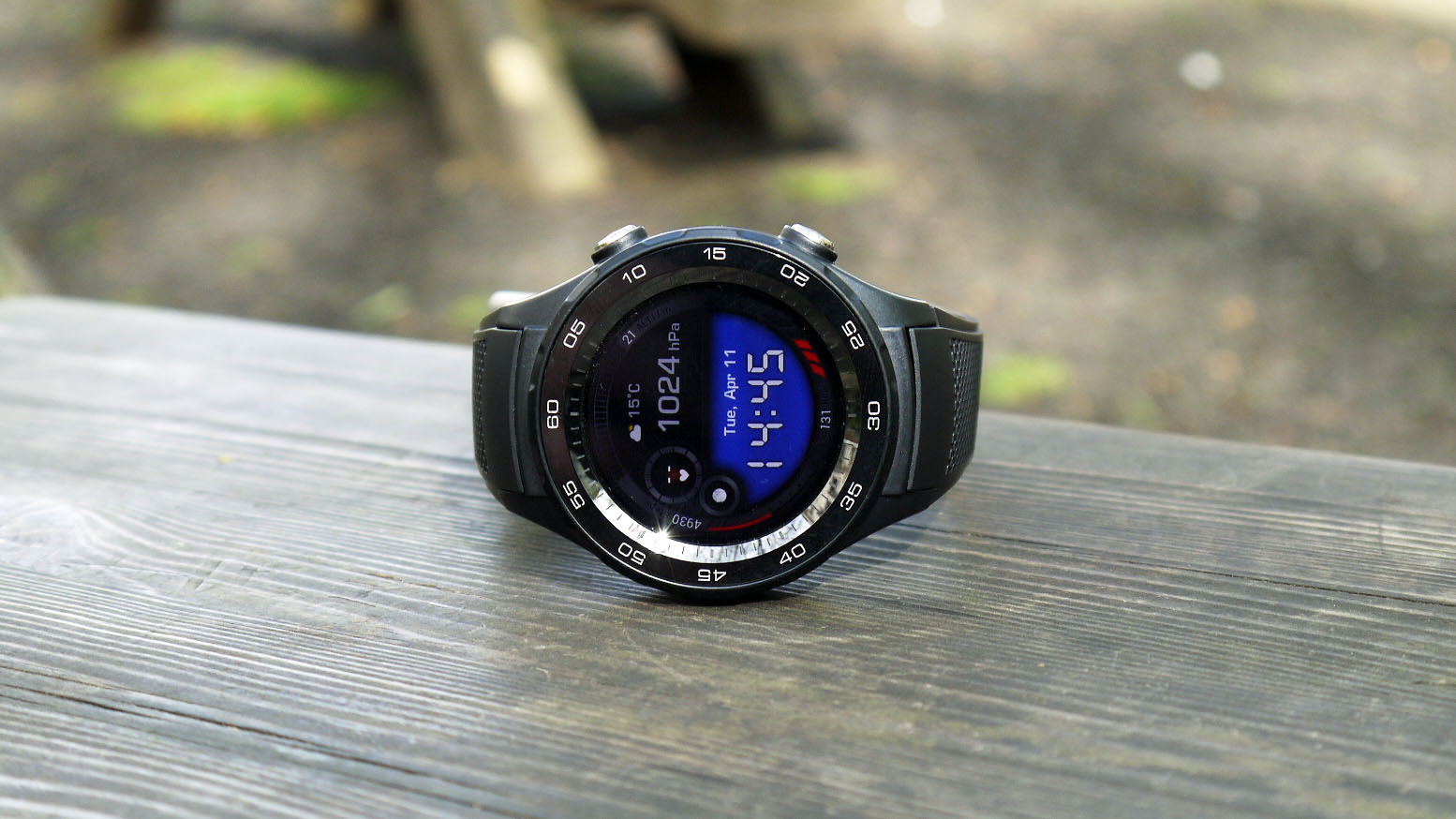TechRadar Verdict
Huawei tries to cover all use cases with the Watch 2, and while it hits most of them, it doesn't do it in a way which is overly user-friendly. If anything, it strengthens the case for specialized smartwatches, rather than a one-device-fits-all approach.
Pros
- +
Built-in GPS and NFC
- +
Optional 4G model
- +
Feature-packed smartwatch
Cons
- -
Screen a little too small
- -
Performance can be sluggish
- -
Design less premium than predecessor
Why you can trust TechRadar
Update: There's now a newer smartwatch from Huawei called the Watch GT, but it doesn't run Wear OS software like the Huawei Watch 2. You may find mentions of Android Wear in this review, but the company has since updated the watch with the latest Wear OS software instead.
Smartwatches need more features. At least that’s what Huawei told us at CES 2017, and it’s now made good on its word with the arrival of the Huawei Watch 2.
The Huawei Watch 2 ups the ante with more connectivity options, Android Wear 2.0 (now renamed Wear OS) and a sporty new look, but with a smaller display and chunkier build this latest smartwatch feels like it's trying to do too much, and it doesn’t excel in every area.
So can a smartwatch have too many features for its own good?
Huawei Watch 2 price and release date
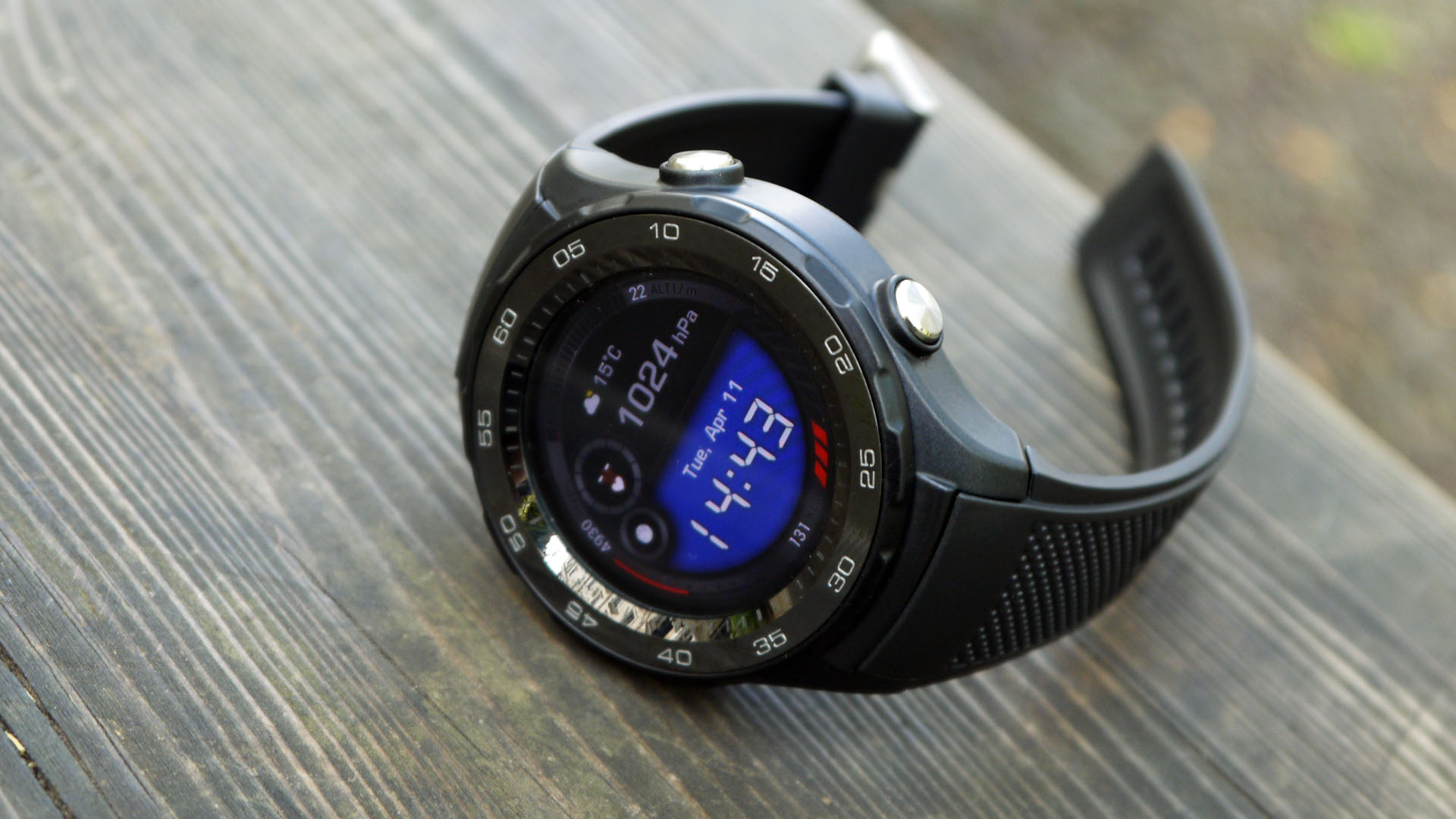
- Launched at £329 ($299, AU$450)
- There's also a 4G model at £379 (AU$599, around $400)
- The price has dropped around the world though, so it'll be cheaper
The Huawei Watch 2 was released back in the first half of 2017 at £329 ($299, around AU$395) for the non-4G version, while those looking at the 4G model had to part with £379 (AU$599, around $400).
The price in the US has been as low as $179.99 and in the UK we've seen it touch the £190 mark (or £210 for the 4G model) so you should be able to find a better deal than the launch price.
Huawei hasn't released the 4G watch in the US either. The launch price made the Huawei Watch 2 one of the more expensive Wear OS watches from the smartphone manufacturers, although it is on a par with the 4G-enabled LG Watch Sport, and it has dropped in price more heavily.
Sign up for breaking news, reviews, opinion, top tech deals, and more.
Design
- Sporty, rugged and chunky design
- Two hardware buttons, but no rotating crown or bezel
- Comfortable and lightweight, but will be too big for some
The original Huawei Watch had a premium metal finish which looked smart on the wrist, but it’s all-change with the Huawei Watch 2.
Instead of premium appeal, Huawei has opted for a rugged, sporty finish on the Watch 2 with a chunky plastic body and sizable bezel surrounding the watch face.
It’s not particularly eye-catching, and it’s unlikely to win any style awards – but it is at least functional. The Huawei Watch 2 has a strong health and fitness angle, and its design means it will survive the rigors of a workout, training session or race.
To that end the silicon strap is sweat-proof, and it can be easily removed, with handy pegs on the underside of the strap making it easy to detach from the watch.
While it uses a standard 20mm strap size, the design means you’ll be limited to Huawei Watch 2-specific straps if you fancy changing the look and material.

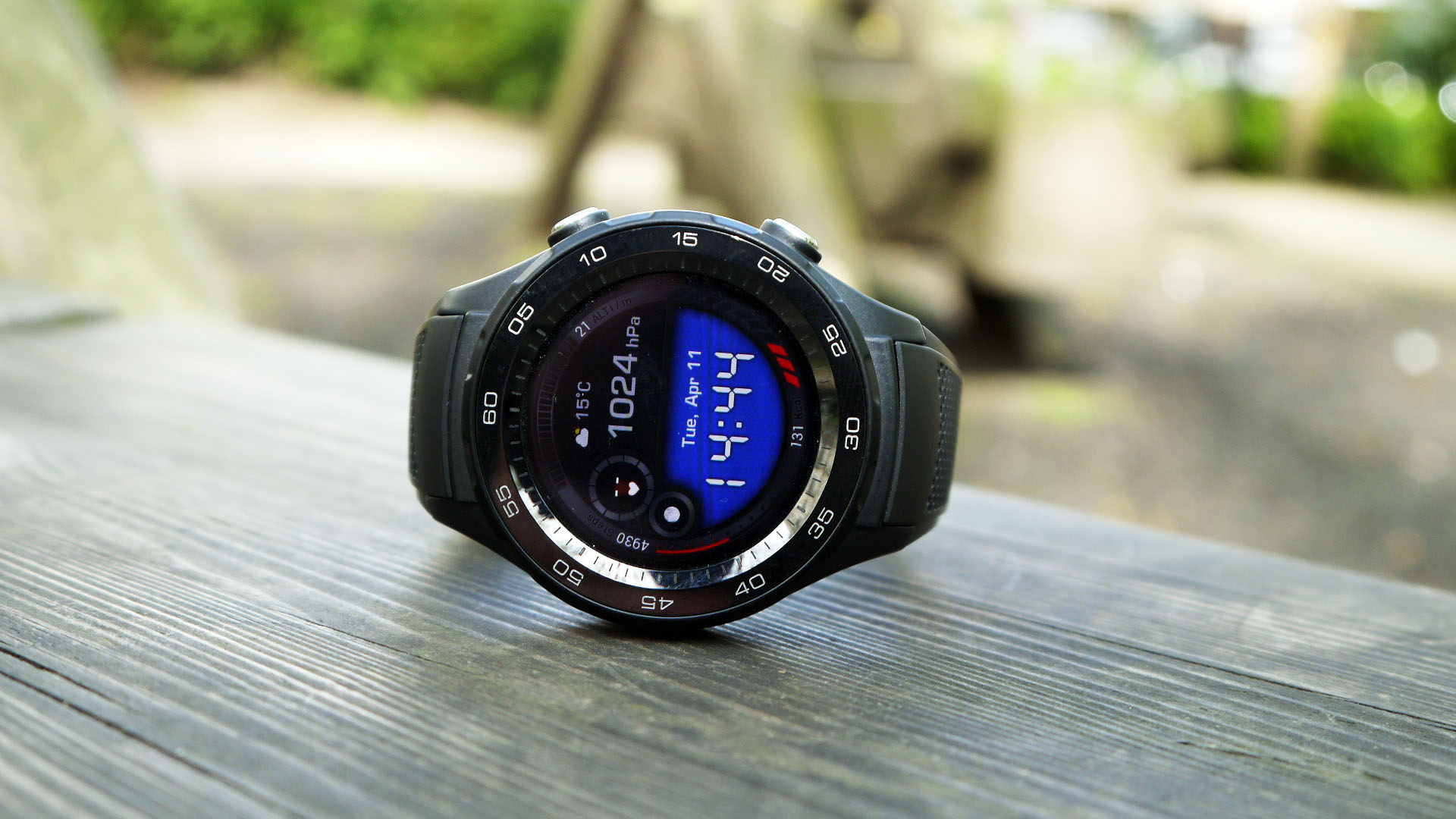
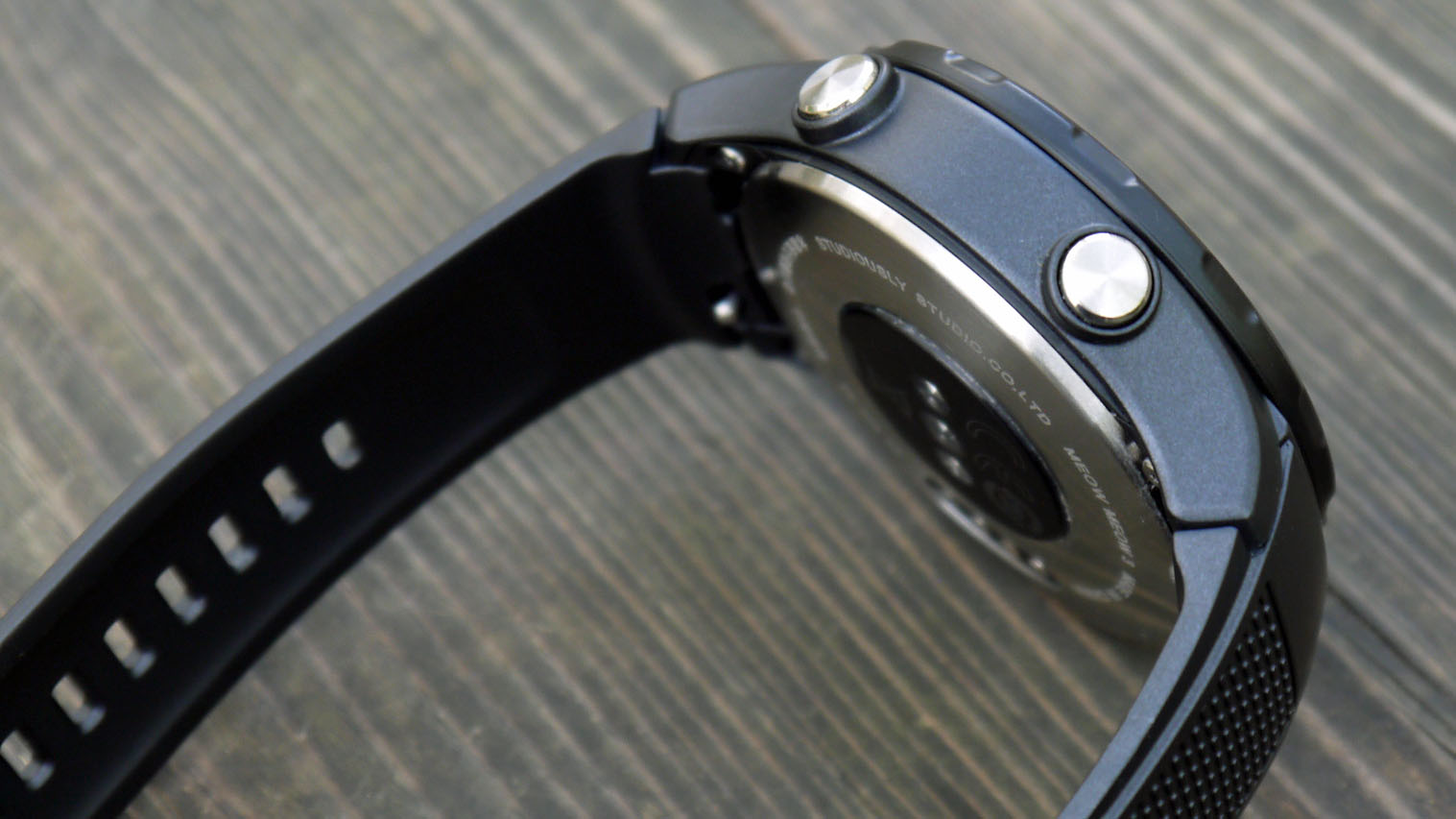
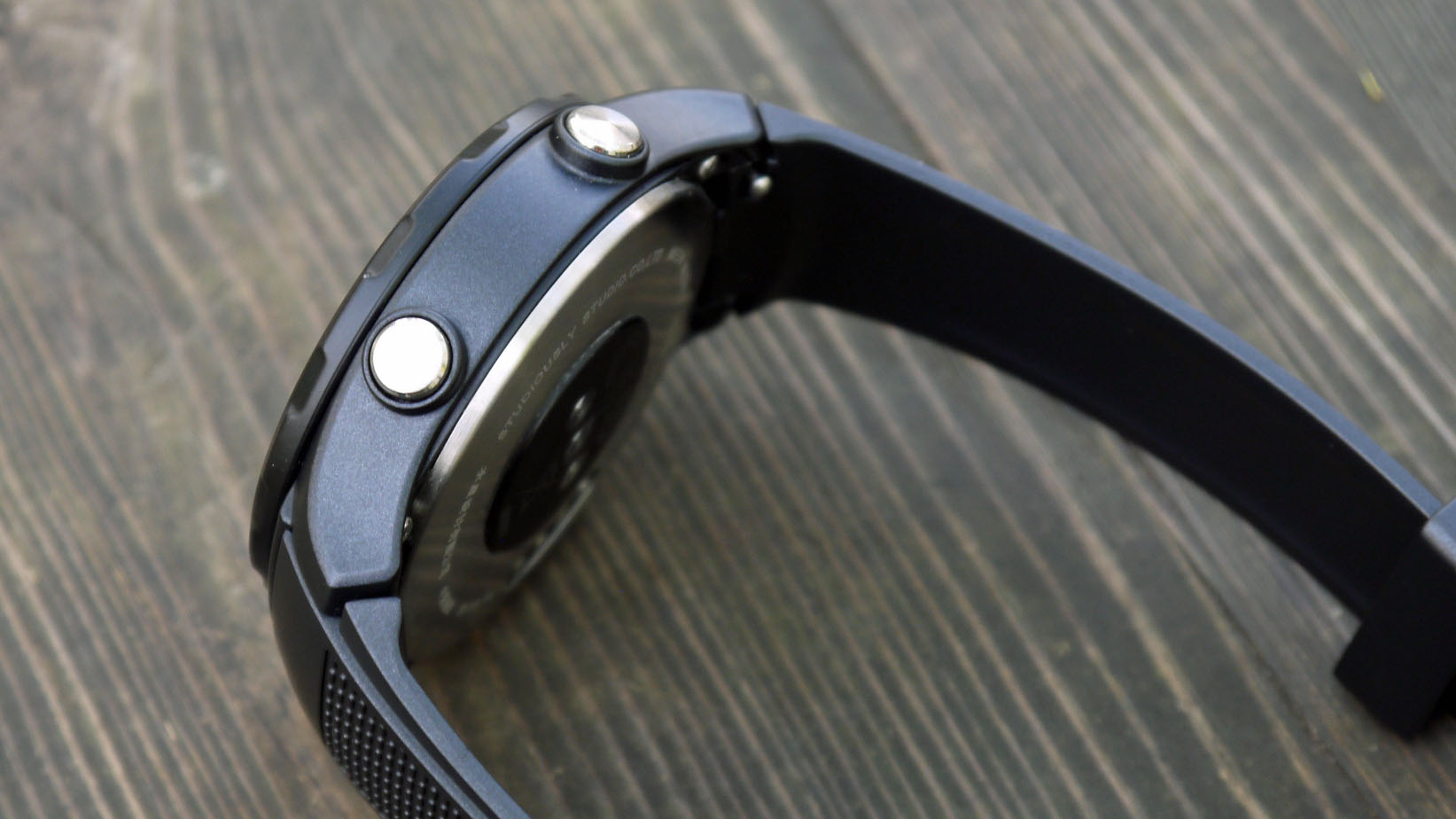
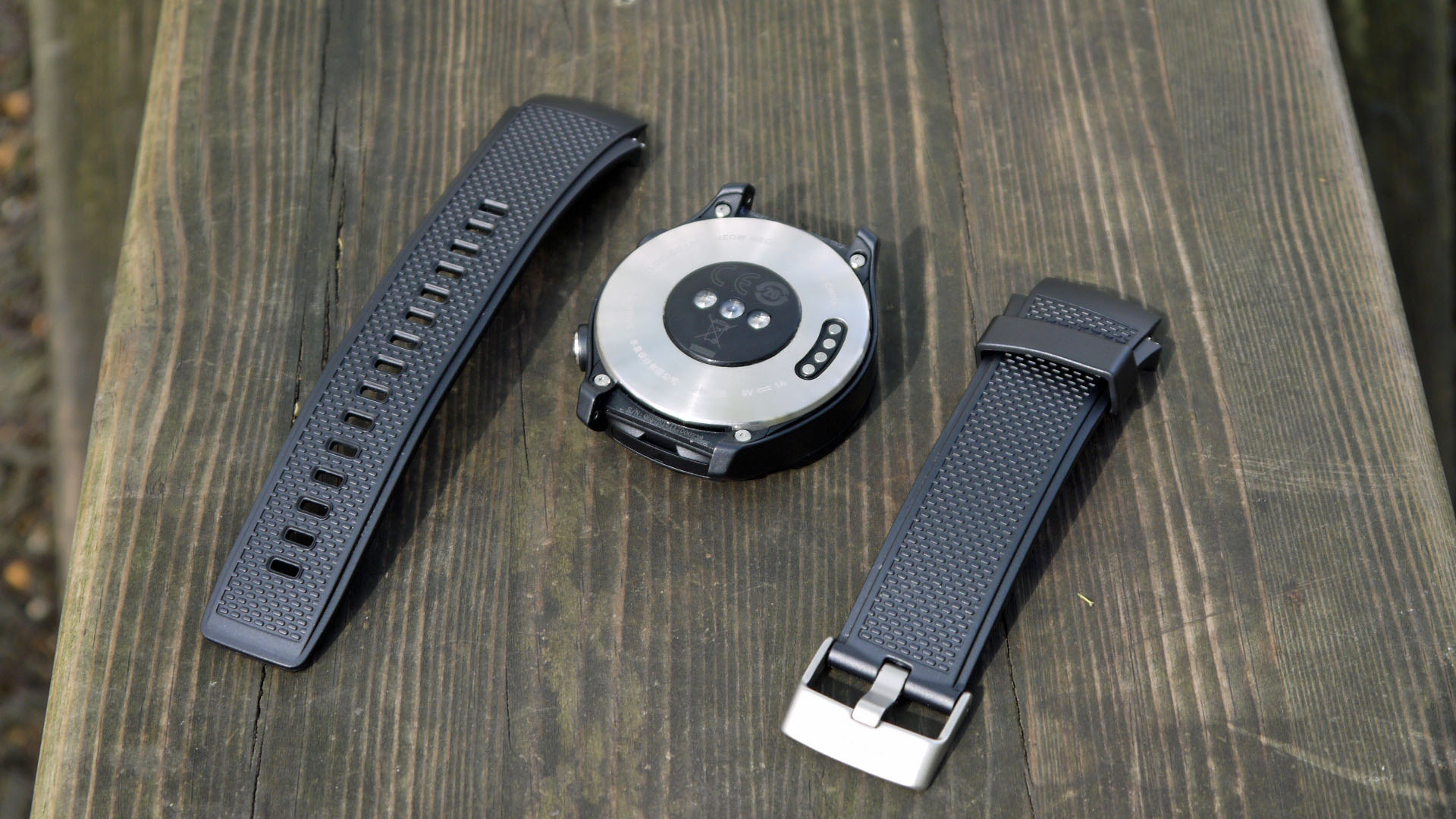


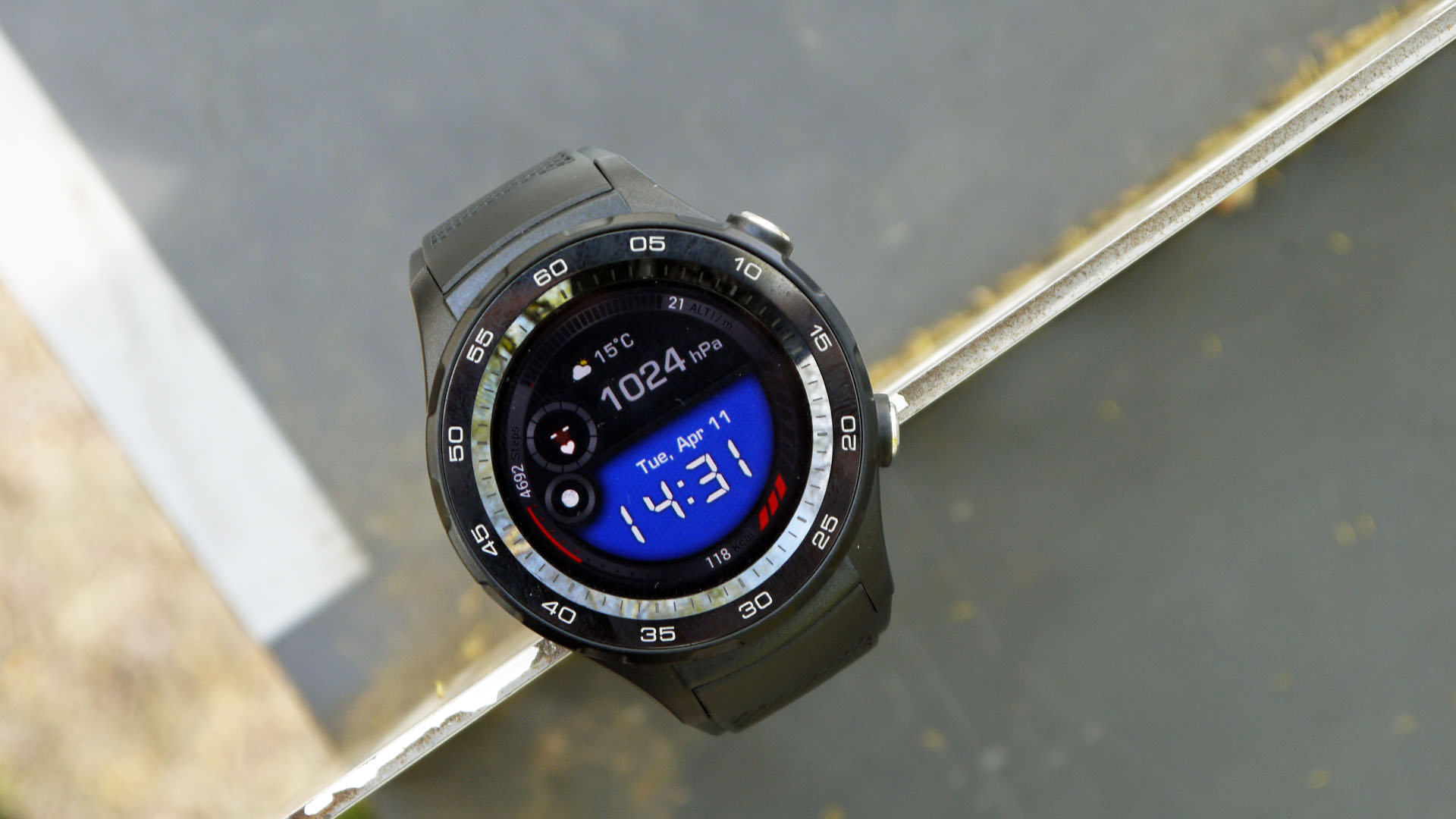
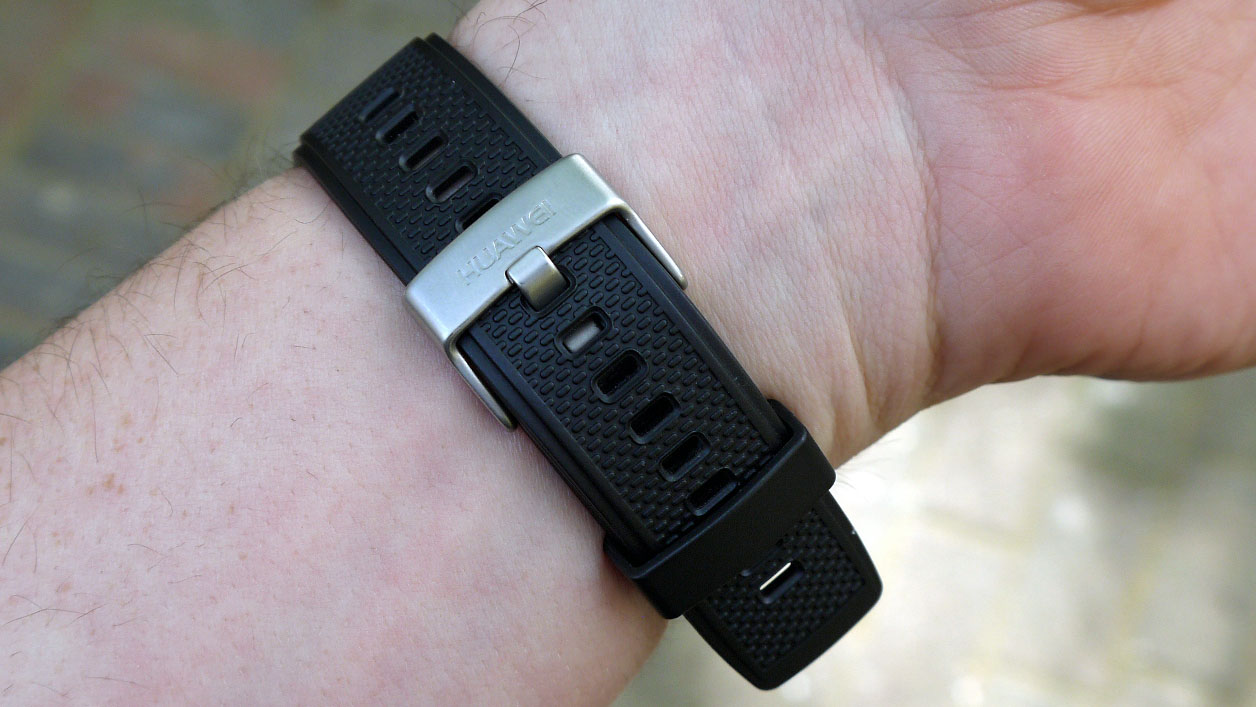

At 48.9 x 45 x 12.6mm the Watch 2 is a sizable presence on the wrist – it’s comfortably bigger than its predecessor even though it has a smaller display. Compare it to the LG Watch Sport, though, and the Huawei actually comes out on top with a slimmer frame.
While it may be big, at 57g the Huawei Watch 2 is surprisingly light considering the GPS, NFC, Wi-Fi, Bluetooth and 4G SIM crammed inside. The flat rear to the watch case means it sits comfortably on the arm, with the built-in heart rate monitor almost flush to the metal cover.
You get two buttons on the right side of the watch, with the one at the 2 o’clock position your main navigation key for bringing up the app list and returning to the clock face. The second, at 4 o’clock, is a programmable key which you can assign to the app you want it to launch.
It’s set to launch Workout by default, but for those less actively minded Android Pay is a useful shortcut to have attached to this button for quick contactless payments.

A missing feature we’re disappointed by is the lack of a rotating crown or bezel. With the Huawei Watch 2 launching with Android Wear 2.0 – an OS which has been developed to play nicely with a rotating input – it feels like Huawei has missed a trick on its latest smartwatch.
Huawei is far from alone though, as Tag Heuer, Mont Blanc, Misfit and LG have also all chosen not to incorporate a spinning bezel or crown into the new Android Wear 2.0 watches as well. Take a look at the Apple Watch 3 and Samsung Gear S3 though – neither of which run Android Wear – and you’ll find a rotating crown and spinning bezel respectively.
For those looking for something more professional-looking there’s always the Huawei Watch 2 Classic, but even though it has fewer features the Classic is the same size, heavier and more expensive.
Display
- 1.2-inch, 390 x 390 display
- A little too small for some on-screen tasks

We’re disappointed by the display on the Huawei Watch 2. At 1.2 inches it’s small, and feels even smaller when you try to use the on-screen keyboard or some of the more complex apps.
The resolution, at 390 x 390, also isn’t the highest definition we’ve seen on smartwatches, and while it boasts a higher pixel density than the original Huawei Watch the latter was larger at 1.4 inches, giving you more space on screen.
The display is bright enough to read everything, and is generally responsive to the touch, but it’s not a standout feature that really gets you engaged with the watch.
- Take a look at our Huawei discount codes for the best Huawei offers and savings.

TechRadar's former Global Managing Editor, John has been a technology journalist for more than a decade, and over the years has built up a vast knowledge of the tech industry. He’s interviewed CEOs from some of the world’s biggest tech firms, visited their HQs, and appeared on live TV and radio, including Sky News, BBC News, BBC World News, Al Jazeera, LBC, and BBC Radio 4.
